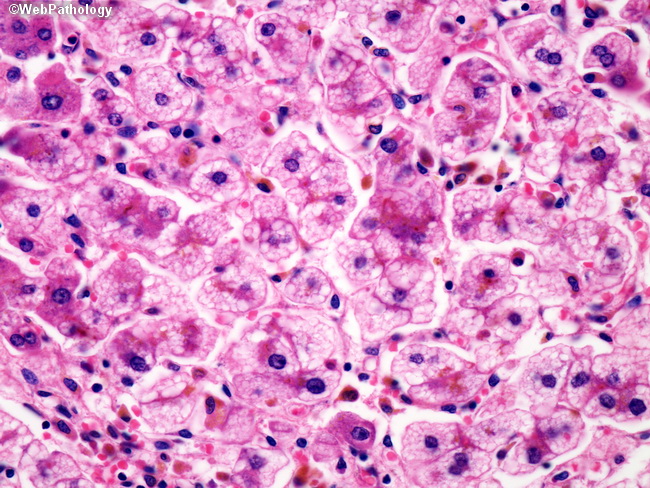Fatty Liver of Pregnancy


Comments:
This high power view nicely illustrates microvesicular steatosis and hypertrophied Kupffer cells containing lipofuscin pigment. The pathogenesis of acute fatty liver of pregnancy is related to long-chain 3-hydroxyacyl-CoA dehydrogenase (LCHAD) deficiency. LCHAD is a mitochondrial enzyme that plays an important role in beta-oxidation of long-chain fatty acids. The condition is recessive and most women have normal fatty acid oxidation in normal (non-pregnant) conditions. However, if the fetus is homozygous for LCHAD deficiency, it cannot oxidize fatty acids normally. The excess unmetabolized fatty acids enter maternal circulation, where they cannot be processed adequately due to reduced enzyme activity in the mother. This is a unique situation where a fetal metabolic deficiency is the cause of a liver disease in the mother.



